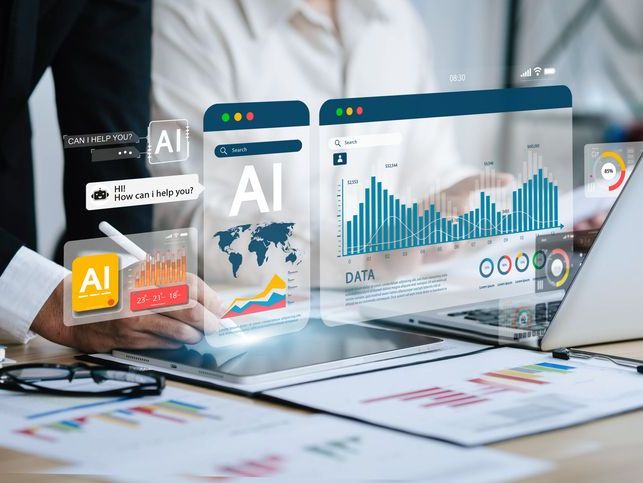Flexible work models are all the rage right now — for good reason. They empower employees to choose where, when and how they work, and productivity skyrockets.
Sounds great, but…
That doesn’t mean you should stop monitoring. Employee attendance tracking helps you get a handle on your business operations, workforce expenses and headcount planning. It also clues you into potential issues, such as burnout and disengagement, that would otherwise fly under the radar.
Let’s look at the essential elements of employee attendance management, along with the best options for monitoring employees the right way.
Why is it important to monitor employee attendance?
Recording employee attendance is equally important for in-office, remote and hybrid teams. Why? Because it keeps you ahead of potential issues. From preventing time theft to ensuring compliance with labor laws, the applications are far-reaching. When used as part of a broader workforce management strategy, monitoring employee attendance allows you to:
- Improve accountability
- Increase productivity
- Ensure compliance
- Streamline payroll processes
- Identify burnout risk
Let’s examine each of these areas in more detail.
Improve employee accountability
When you hold employees accountable for their time and attendance, you set the stage for improved performance. It’s a great way to set clear expectations, promote transparency and to identify smaller issues — such as overworked and overwhelmed team members — before they spiral into bigger problems. The goal isn’t to micromanage or hold people to an unreasonably strict schedule. Rather, think of it as a way to ensure employees contribute their fair share of the workload while maintaining a healthy work-life balance.
Increase productivity
When integrated into workforce management strategies, monitoring attendance helps boost productivity. This is especially true if you use productivity monitoring software. For example, by using software to track time and attendance, one global logistics company achieved more accurate billing. It’s also a great way to see which employees are putting in too many — or too few — hours. This allows you to redistribute workloads in real time.
Ensure compliance
If you work in an industry with strict labor laws, employee monitoring is especially important. It allows you to enforce overtime policies and stay compliant with local, state and federal regulations. Some solutions, such as ActivTrak, take this a step further by helping you track data privacy and security policy compliance. Together, these monitoring solutions keep a full record of employee hours and activities — ones that are easy to search and filter should the need arise.
Streamline payroll processes
For hourly and shift-based roles, tracking employee attendance is a reliable way to process payroll. In addition to accurately reported work hours, you reduce the likelihood of human error — missed breaks, incorrect start and end times or uncaptured overtime. Regularly monitoring employee activity allows you to cut down on the amount of time it would otherwise take to find and fix inaccuracies.
Identify burnout risk
While many look at attendance monitoring as a way to ensure employees work enough, the opposite also applies. Regularly tracking attendance alerts you to the early signs of burnout and disengagement. For example, you might notice an employee clocks in late, leaves early, takes frequent breaks and frequently calls in sick. These are all indicators it’s time for a conversation to find out what’s going on — and how you can help.
5 Ways to Monitor Employee Attendance
The best way to monitor employee attendance is with software. While biometrics, badges and timesheets are all options, none of these come close to the accuracy and reliability of employee monitoring solutions.
Let’s take a look at the five most common methods for tracking attendance now.
1. Employee time and attendance tracking software
Modern employee attendance trackers go far beyond the traditional punch-in/punch-out tools of the past. These software solutions can automatically log when employees start and end their workdays — whether they’re in the office, working remotely or operating on a flexible schedule.
Tools like Clockify, Harvest and Toggl help teams track hours worked, time spent on tasks and project-based billing. Some options, such as TimeCamp, run in the background to capture activity without requiring manual input.
For a more complete view of employee attendance and engagement, platforms like ActivTrak take it further — recording not just login times but also focus time, app usage and employee productivity. This gives managers the context they need to differentiate between being clocked in and being productive, all visualized in real-time dashboards.
2. Badging systems
Some companies rely on keycards or badges to track attendance. But these systems come with challenges. One study found 20% of workers don’t badge in when entering the workplace — they simply follow others in before the gate or door closes. It’s also easy to lose or forget physical badges and cards.
3. Manual timesheets
Despite the availability of software that automatically tracks employee time and attendance, many organizations still use manual timesheets — either through spreadsheets or requiring employees to manually enter their time into tools. This method often leads to inaccuracies, especially when team members wait until the end of the week to try and remember start and end times — let alone how many hours they dedicated to different tasks. It also increases your risk of time theft, when employees exaggerate work hours to receive more pay.
4. Biometric systems
Biometric time clocks offer more accuracy and reliability than manual timesheets. These systems record employee arrivals and departures based on physical characteristics like facial recognition or fingerprint scans. However, they won’t work for remote or hybrid employees. And in some states, you may face compliance issues due to laws regulating the collection and use of biometric identifiers.
5. Punch cards
Though far less common, some organizations still rely on traditional punch cards for employee attendance tracking. These manual systems timestamp employee arrivals and departures. They require a physical presence at the office, where people “clock in” and “clock out” each day. They’re also prone to “buddy punching,” when an employee records a timestamp for a coworker who’s late to work or wants to leave early without drawing a manager’s attention. And they provide no details on how people spend their time at work. For these reasons, this method is largely obsolete.
Streamline employee attendance tracking with ActivTrak
Tracking employee attendance is a great way to improve accountability and boost productivity — if you do it right. If your organization still uses manual timesheets or badging systems, it’s time for a change. And thankfully, with the latest advancements in employee monitoring tools, this is easy to do.
To accurately monitor employee attendance records, you need software that automates the process for you.
Enter ActivTrak. Our real-time monitoring solution collects and analyzes daily employee activity no matter where, when or how people work. All you have to do is create your account and let the software go to work. You’ll not only see when employees work but also:
- How much time they spend on different activities
- When and how often they take breaks
- Who’s overworking and at risk of burnout
More importantly, ActivTrak goes beyond merely monitoring attendance to show you when and where employees are most productive.
Sign up for your free account today and join more than 9,500 organizations that rely on ActivTrak to measure and improve employee productivity.





